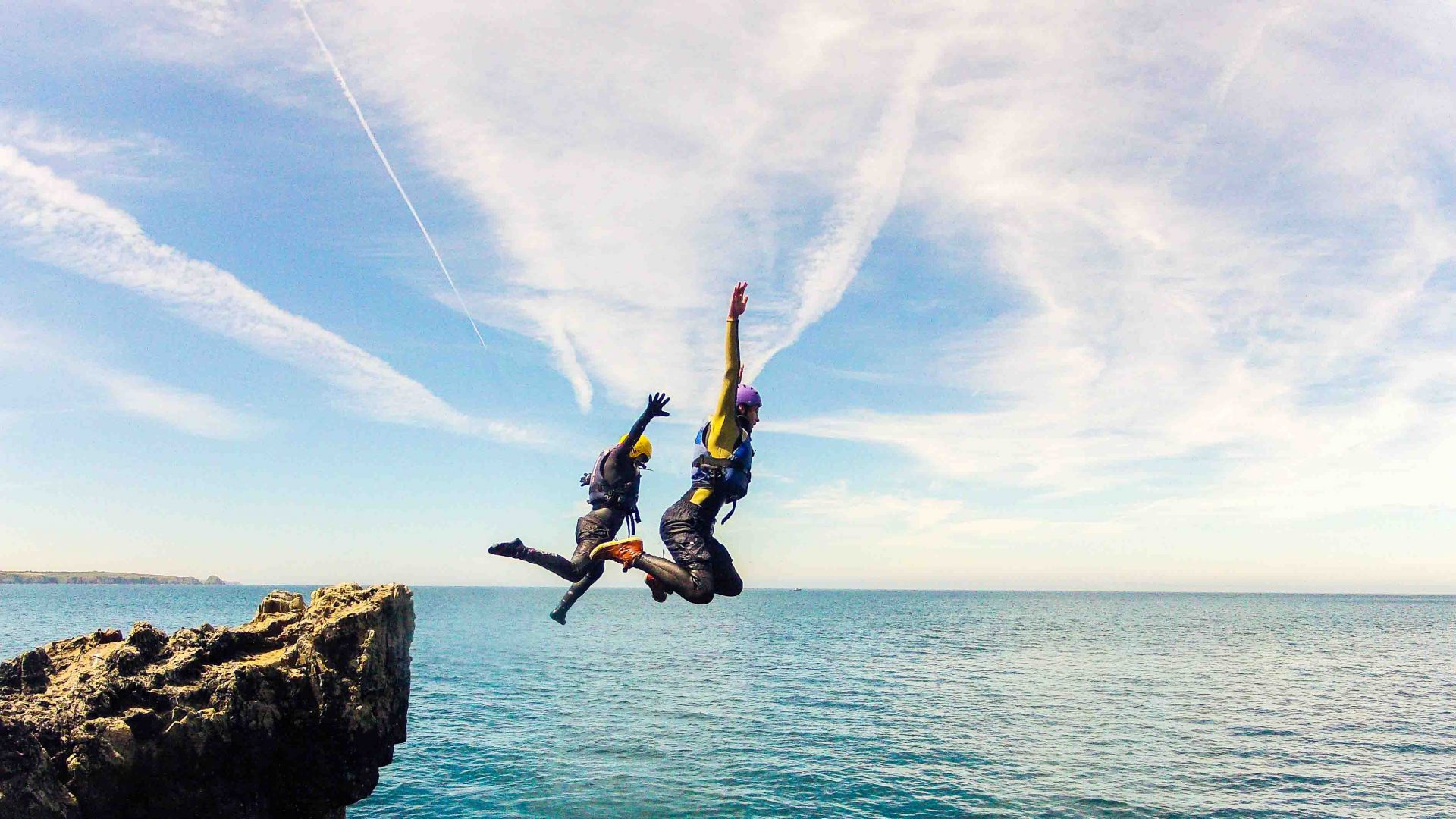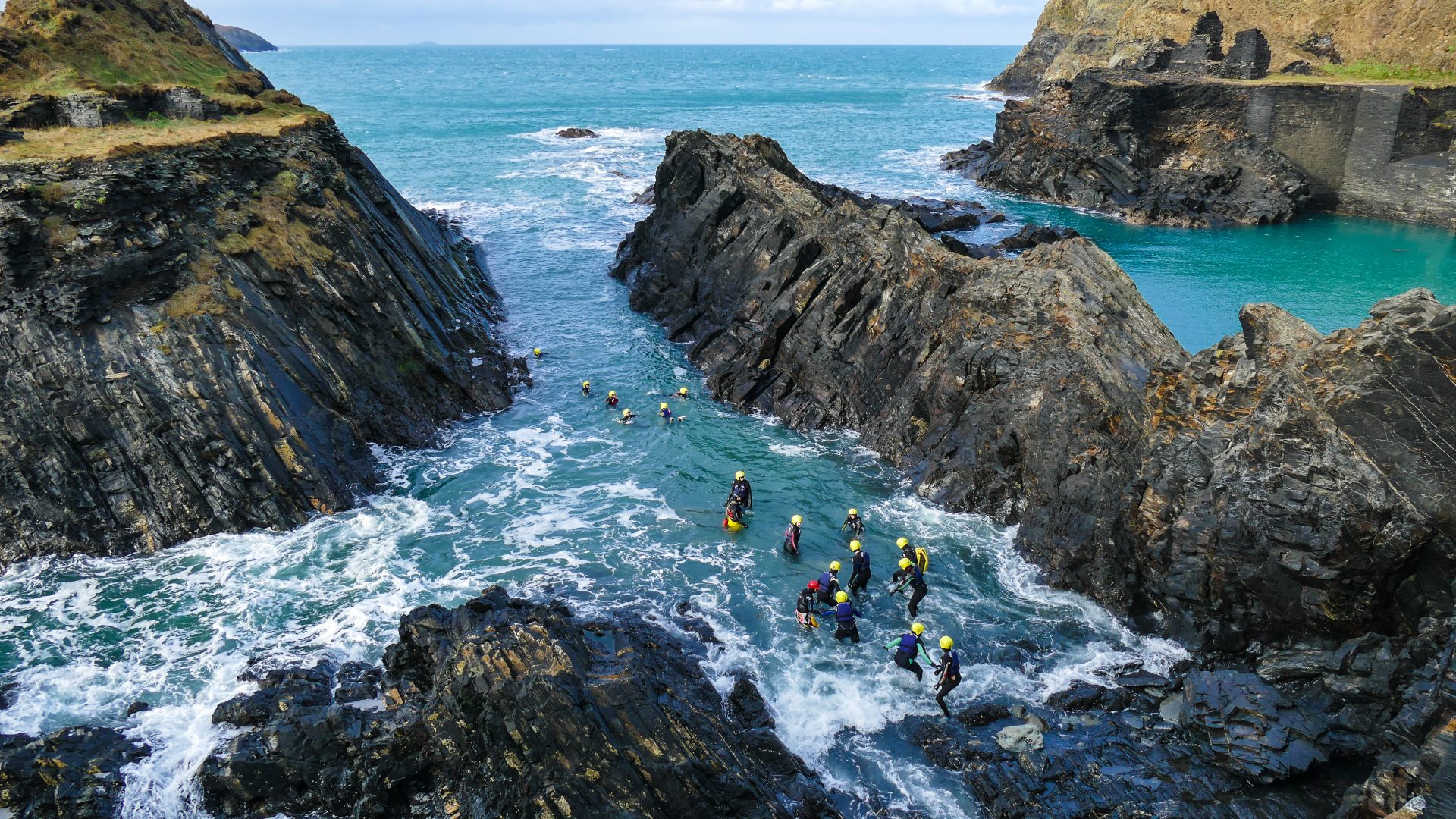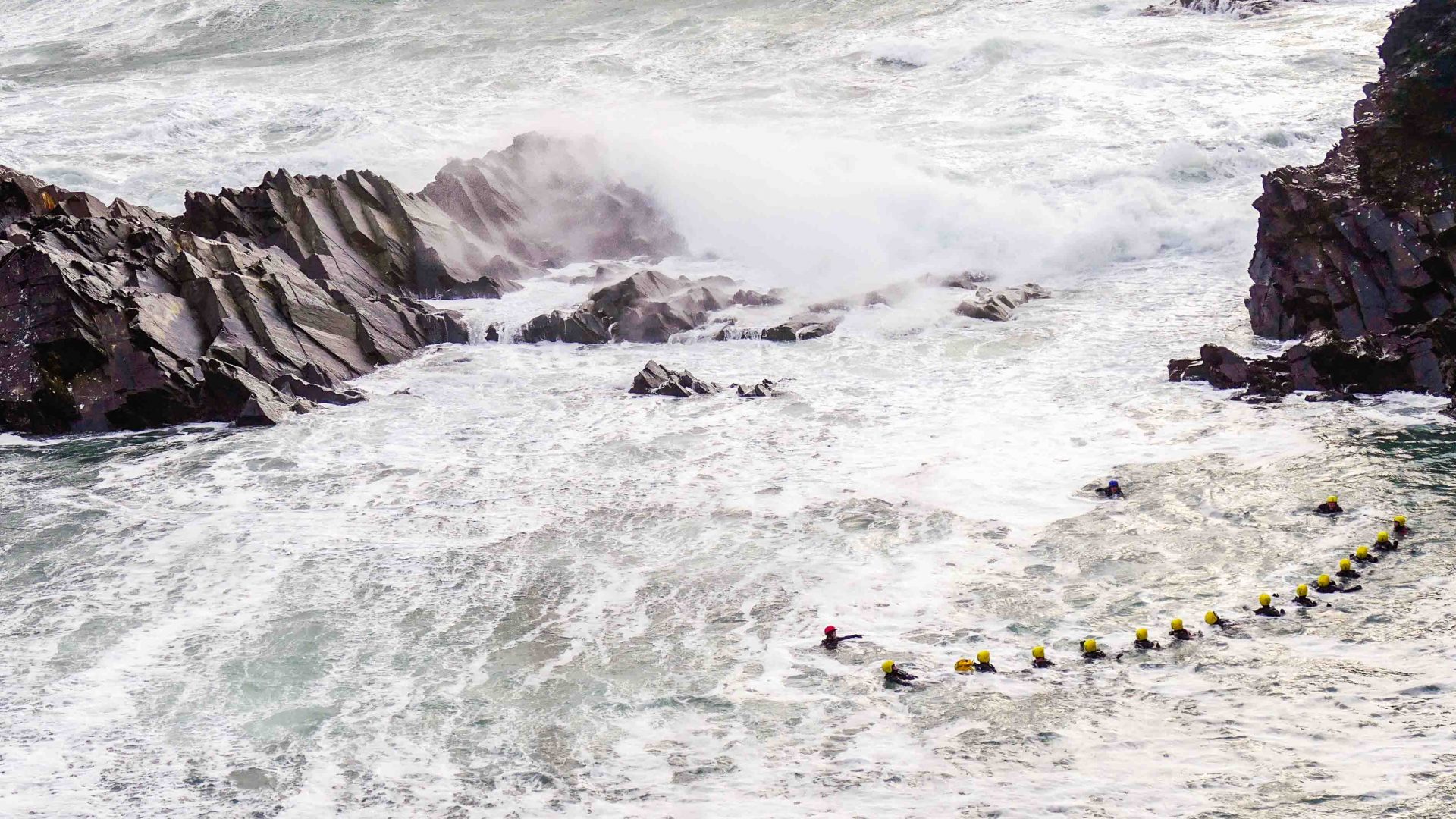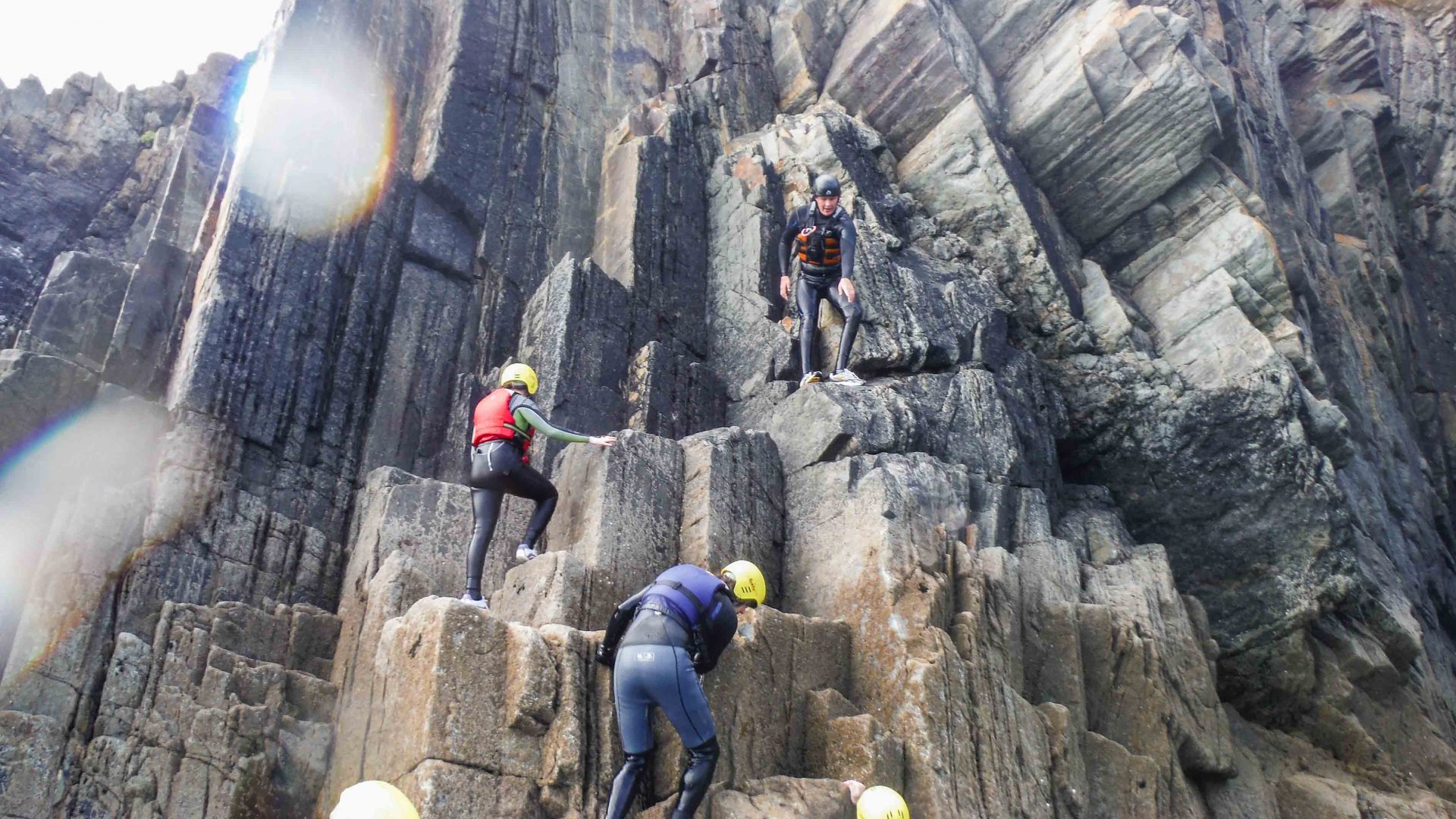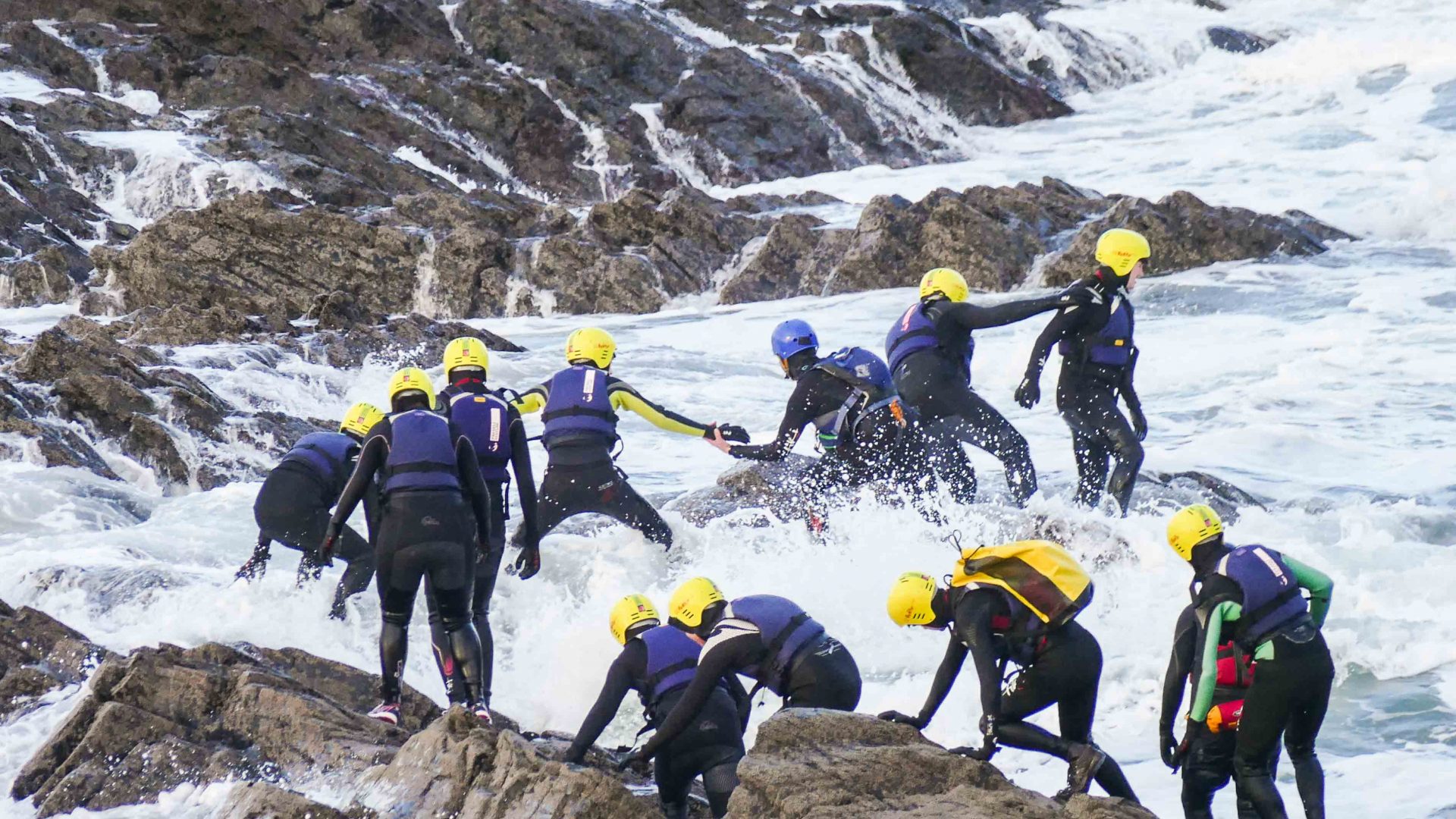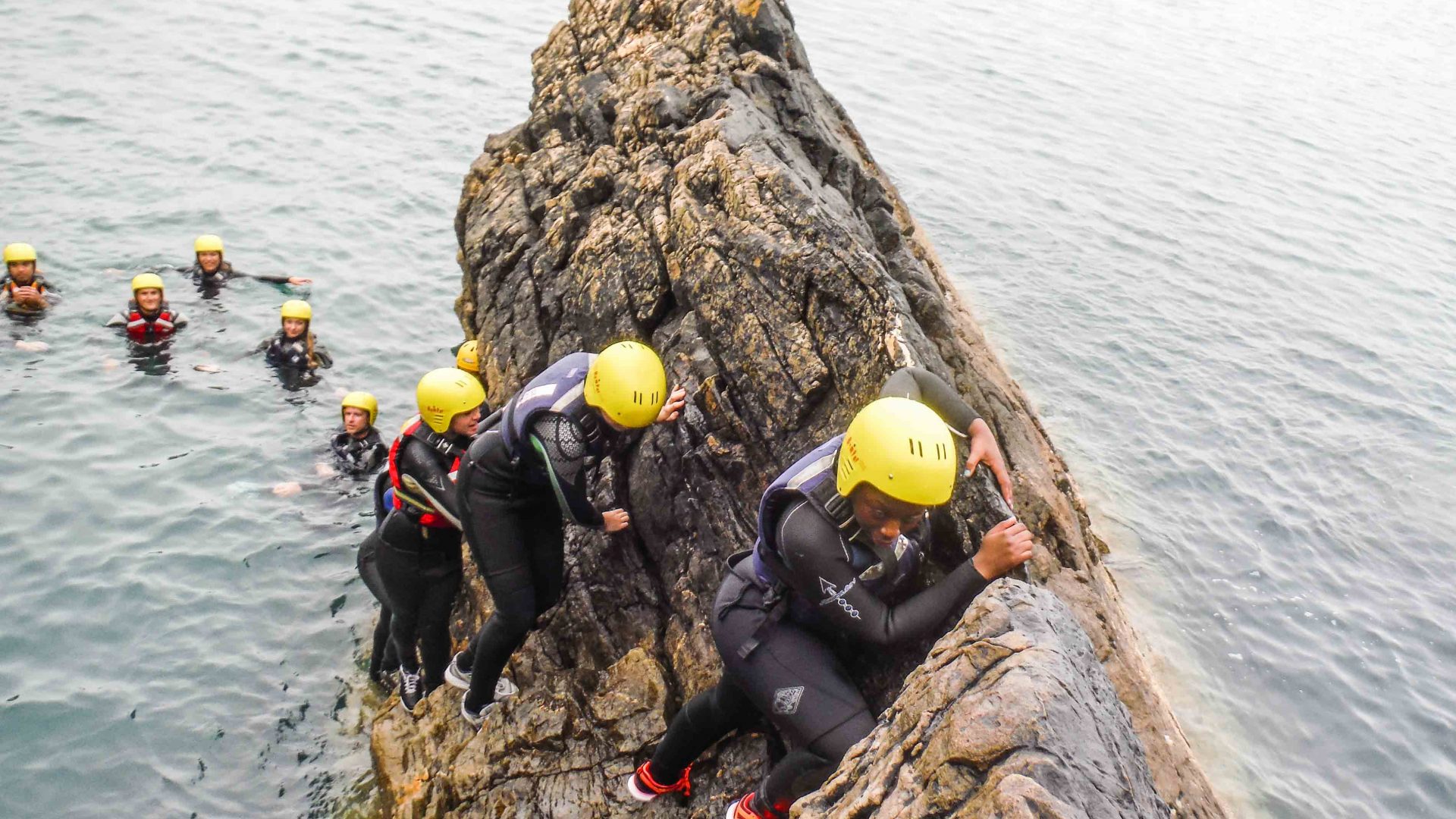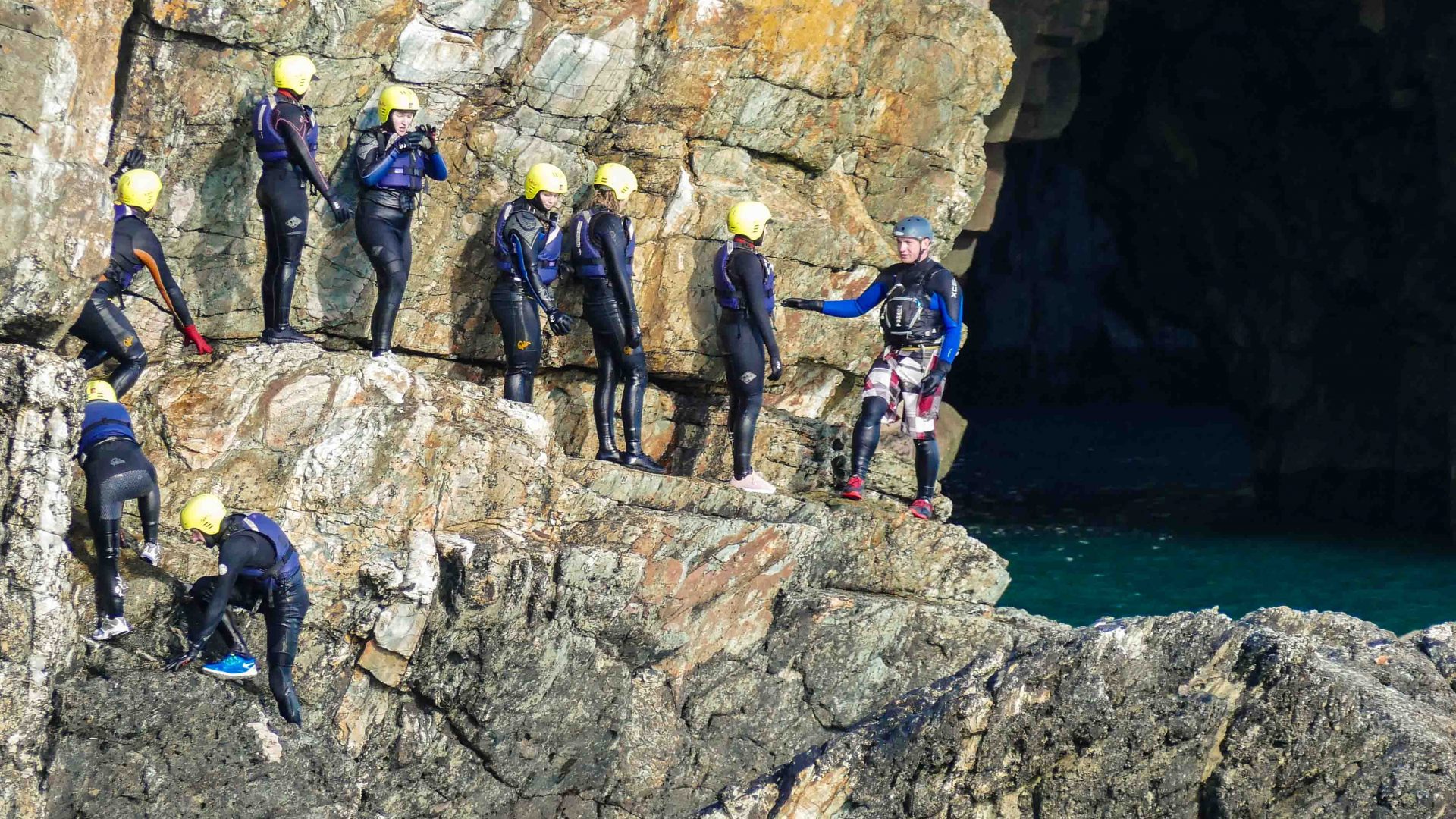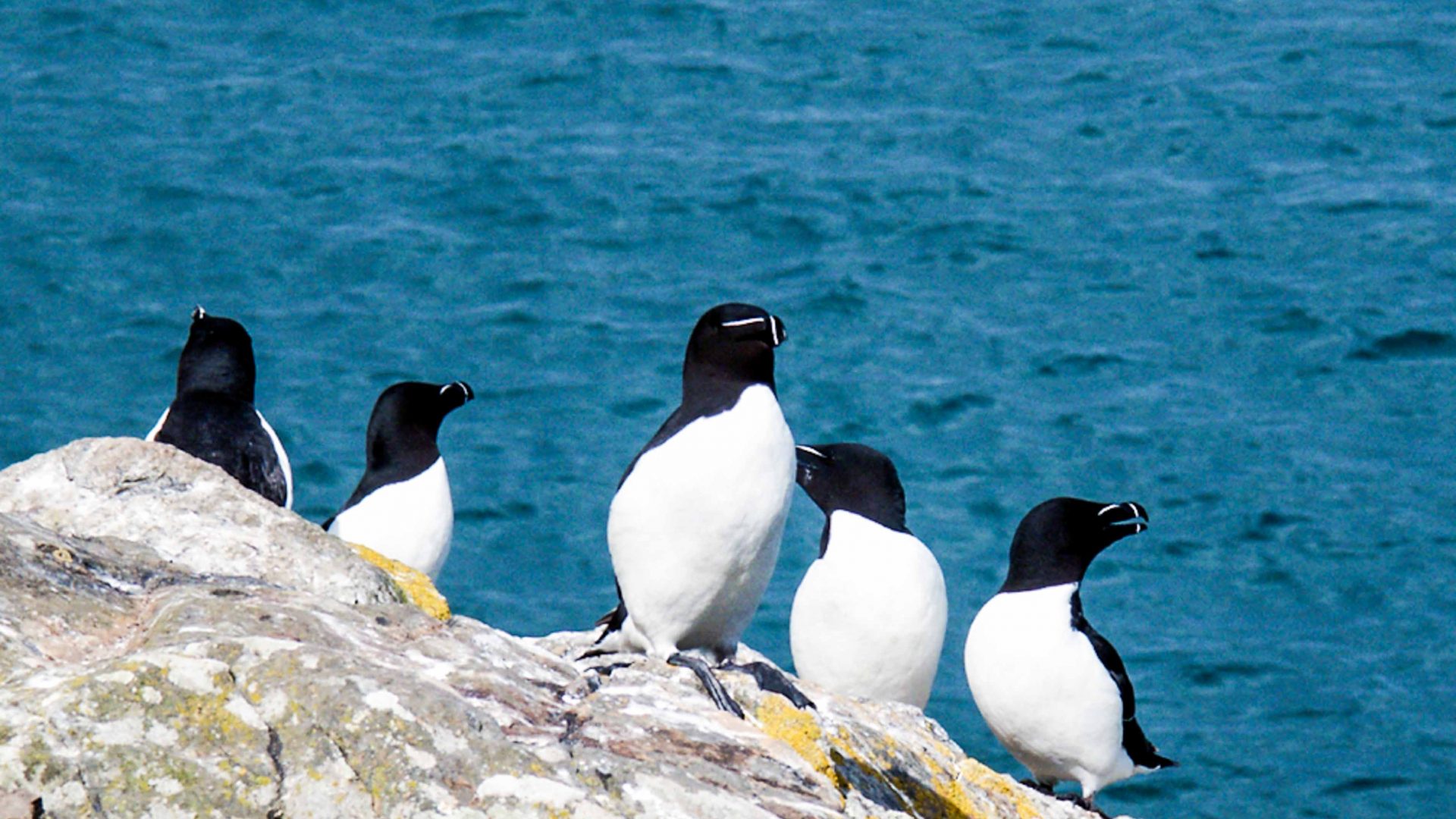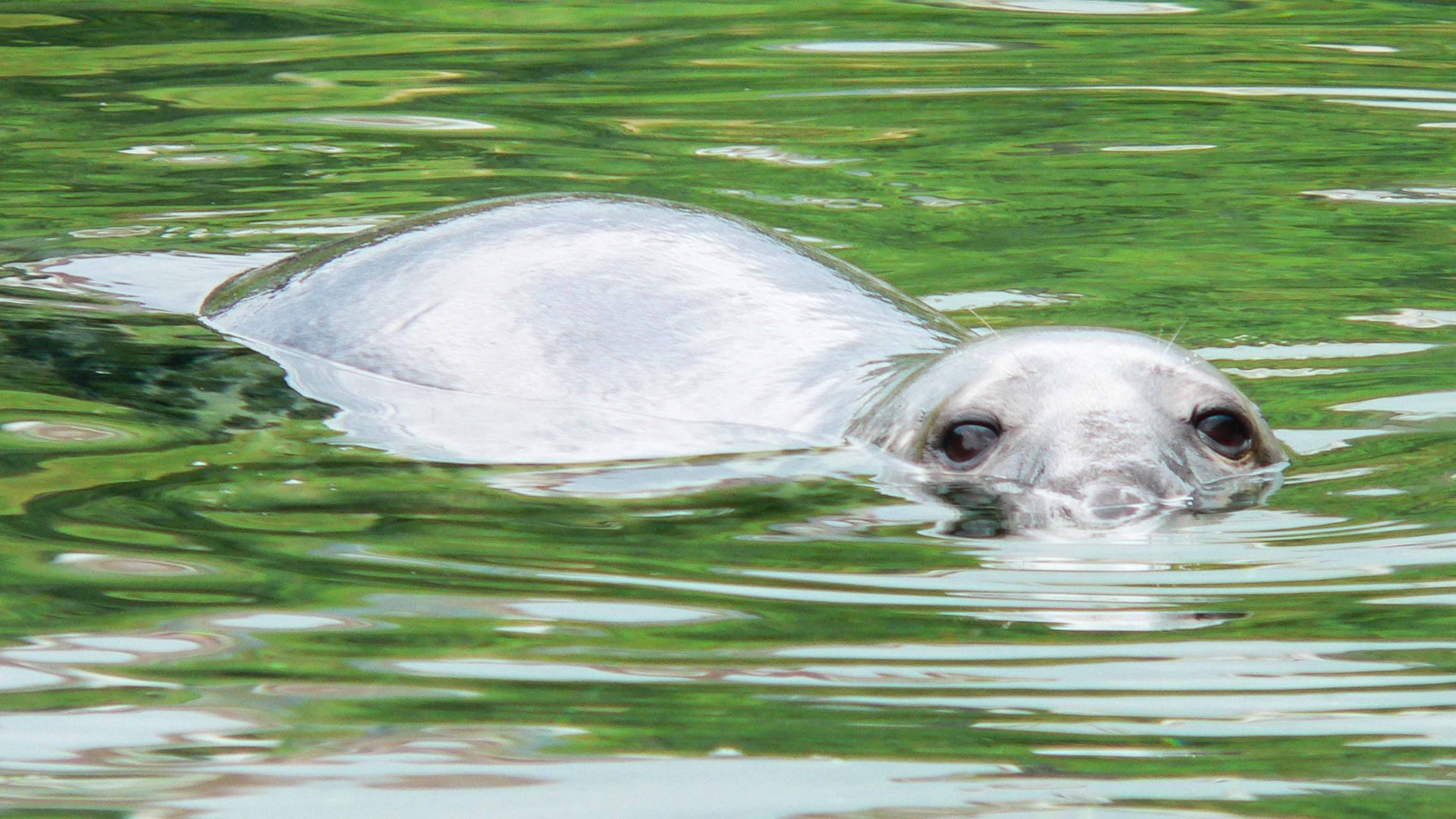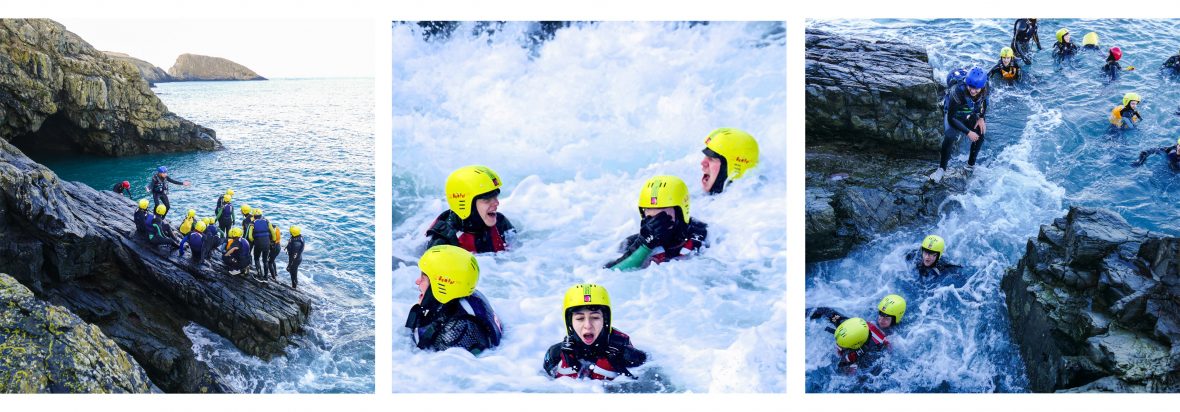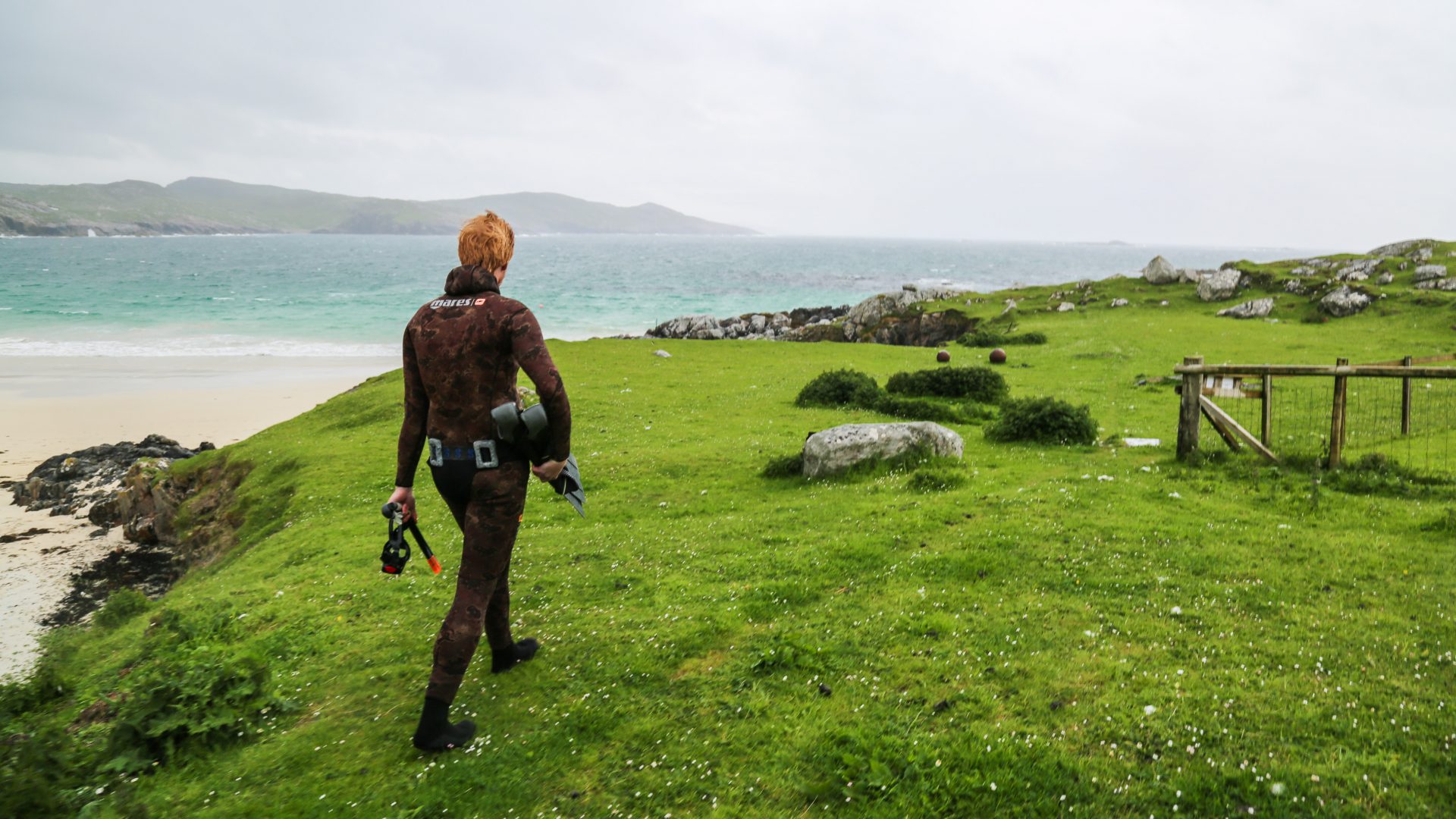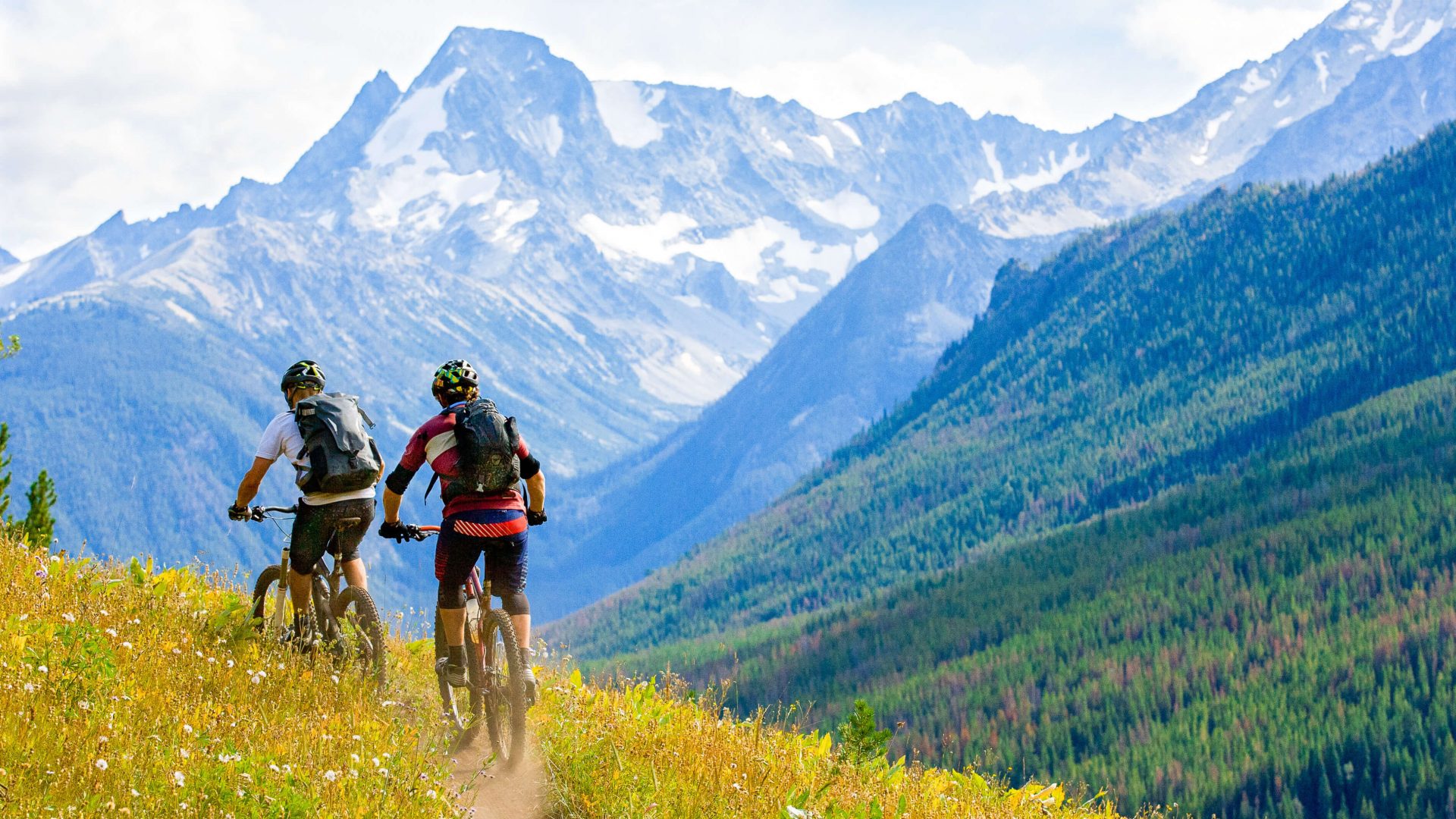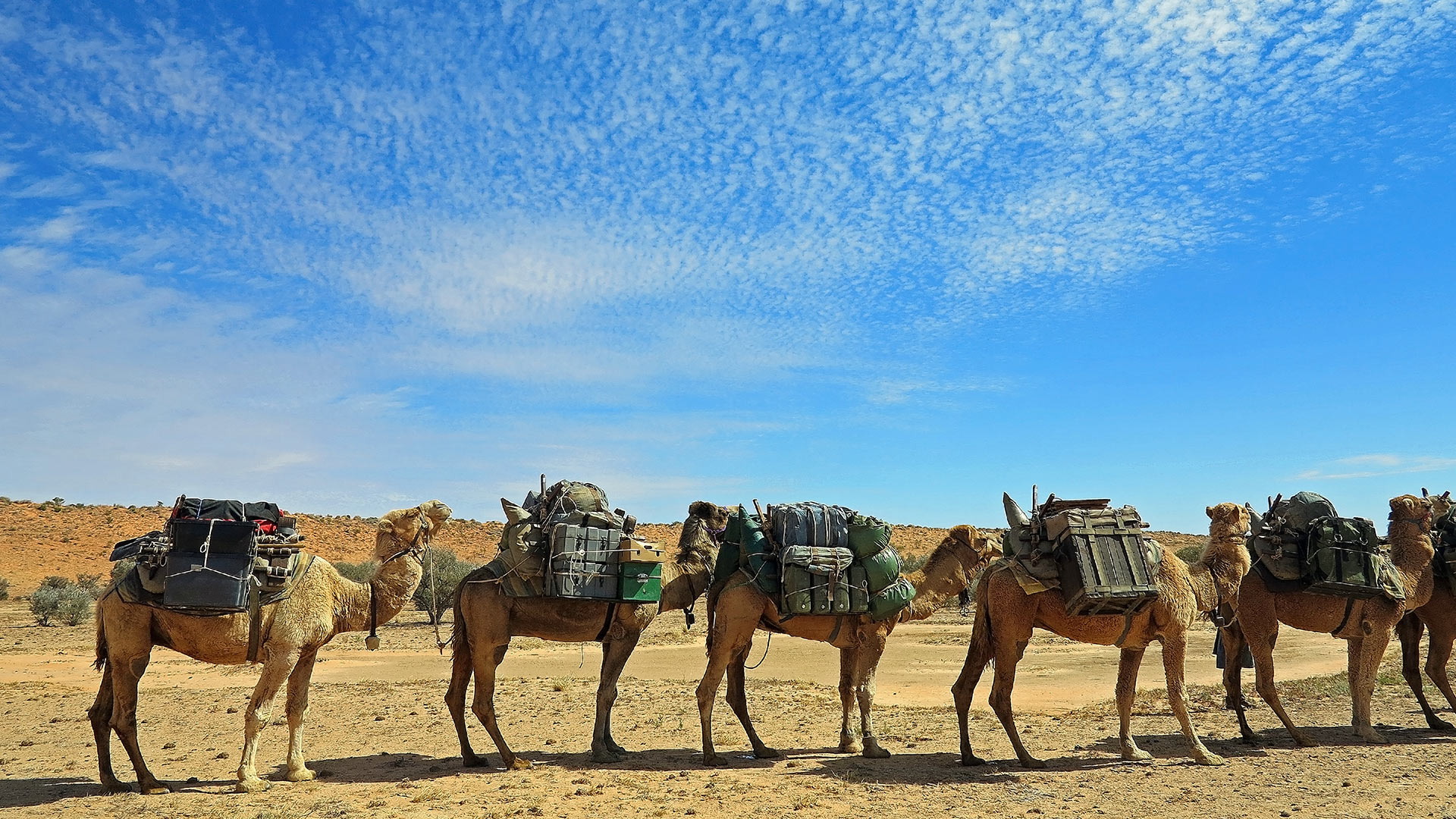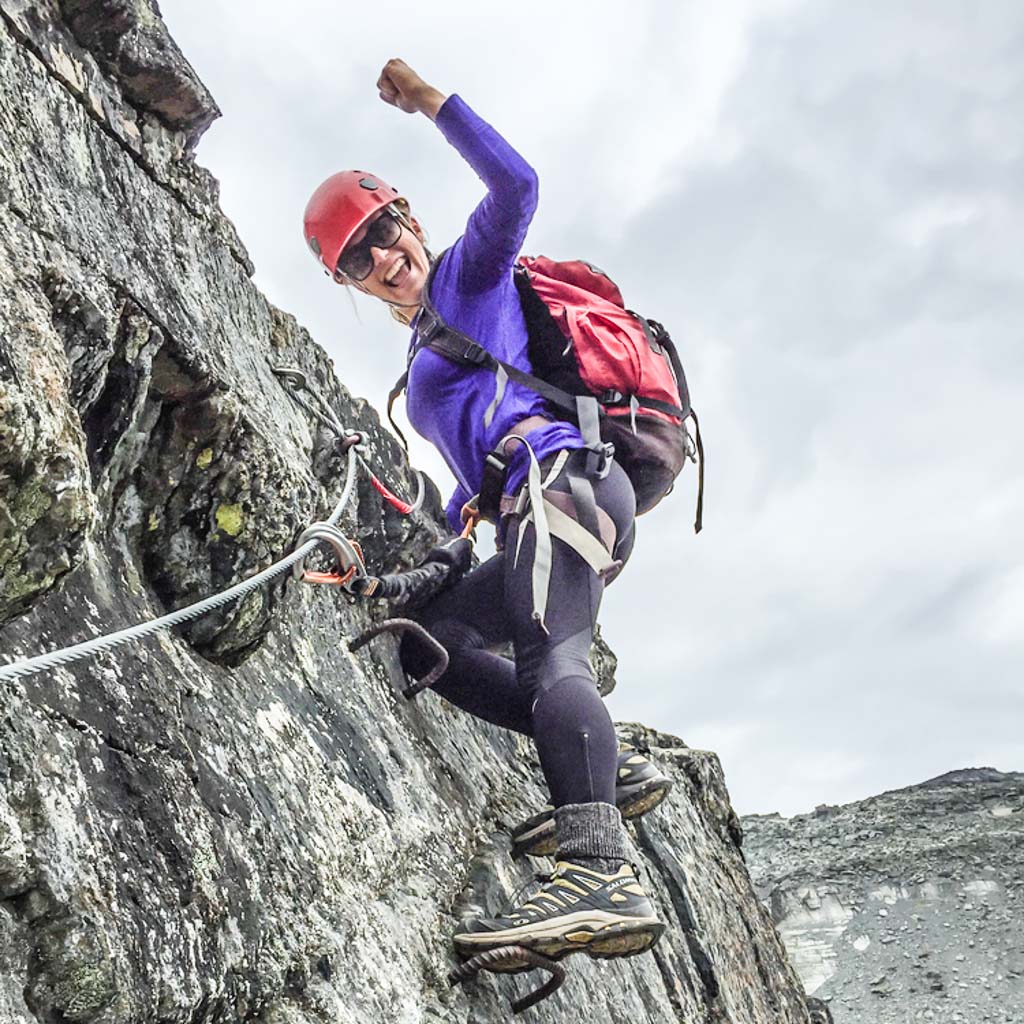No boats, no surfboards, no kayaks—you just swim, scramble and jump to explore these rocky coastlines. Kerry Christiani heads to the birthplace of coasteering on Wales’ craggy coast and dives right in.
I didn’t intend to throw myself off a cliff. It just kind of happened.
I am standing on a rocky ledge, looking out onto the thrashing Atlantic. It is glinting an astonishing shade of turquoise in the pale June light. But there is little time to absorb the beauty of my surrounds. It’s crunch time.
Our guide Megan gives me a little nod and an encouraging smile. I hesitate. The cliff is only 10 meters high—which sounds like a doddle—but 10 meters might as well be 100 meters when you’re hurling yourself into the void, with nothing but you and the swirling torrent far below.
“I’m not sure I can do it,” I waver, as I inch slowly and shakily towards the precipice, holding back the expletives. “Ah, sure you can,” says my guide Megan, brimming with enthusiasm. “Keep your arms flat to your chest and face the horizon. “No,” I say. “I’ll wait a while and watch the others.”
In the northern crook of St. Brides Bay in Pembrokeshire National Park on Wales’ west coast is the headland of St Non’s, named after the chapel ruins where Wales’ patron saint David was said to be born in the sixth century. A few steps down from the chapel, barnacle-encrusted cliffs rise tall and rugged above the pebble coves, eerie sea caves, fortress-like rock stacks and the foaming Atlantic. This is the British coast at its rawest, wildest best; a fine place to pit yourself against the brute force of the ocean.
RELATED: Snorkeling in Scotland? Taking the (cold) plunge
Back in 1988, Sophie and Nick Hurst took one look at this coast and decided to figure out a way to discover all its enticing nooks and crannies. They adopted the pioneering sport of ‘coasteering’, blazing new trails close to their eco-lodge, in a remote corner of northern Pembrokeshire. Their aim, Sophie tells me, was to get that bit closer to nature with a “workout in the wild”.
“Coasteering is such a great way to explore the unspoilt Pembrokeshire coastline,” enthuses Sophie. “It’s the closest thing most people get to a real wilderness experience—out there on the edge of the land where rocky coast meets the wild ocean. It’s truly breathtaking.”
